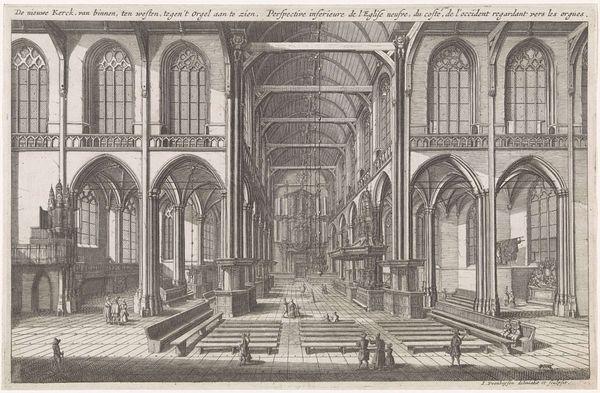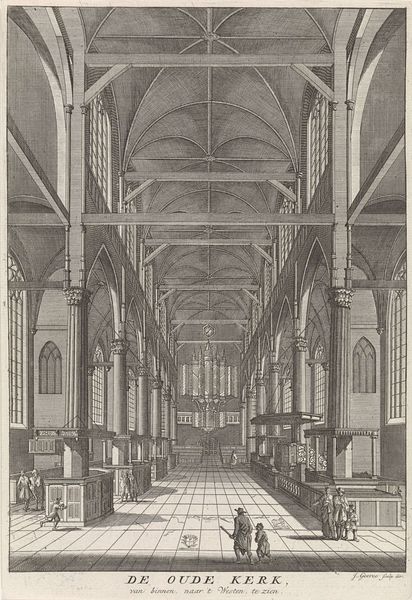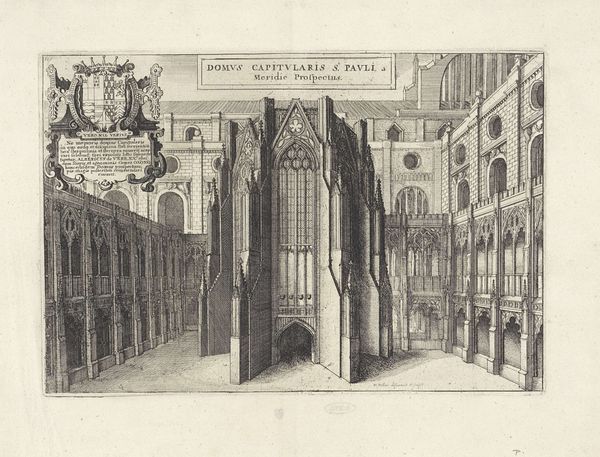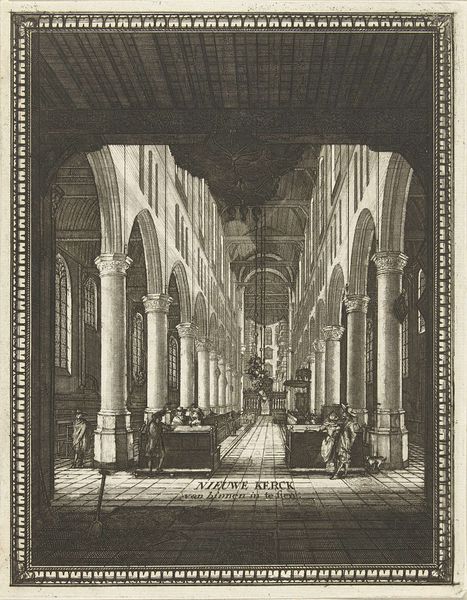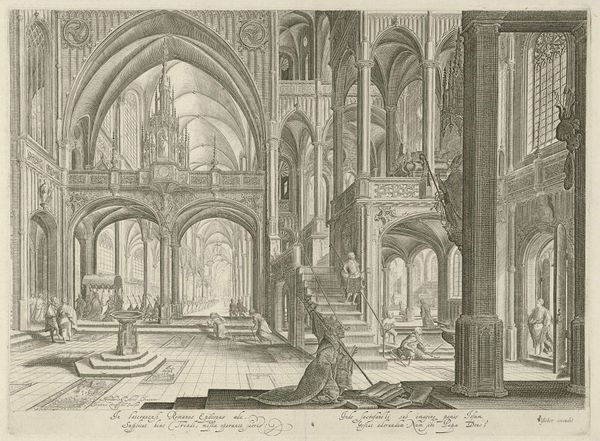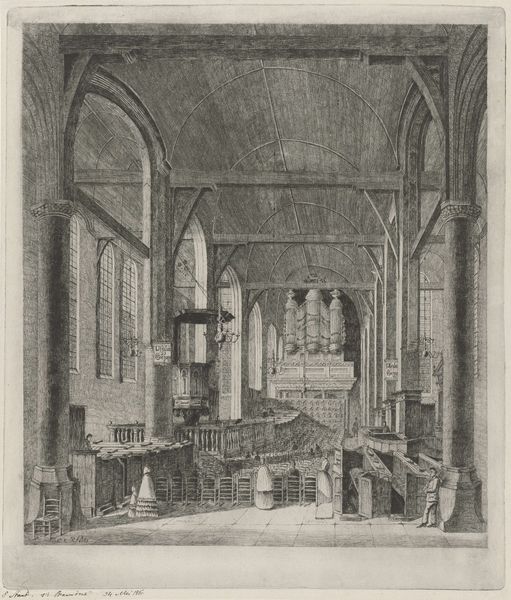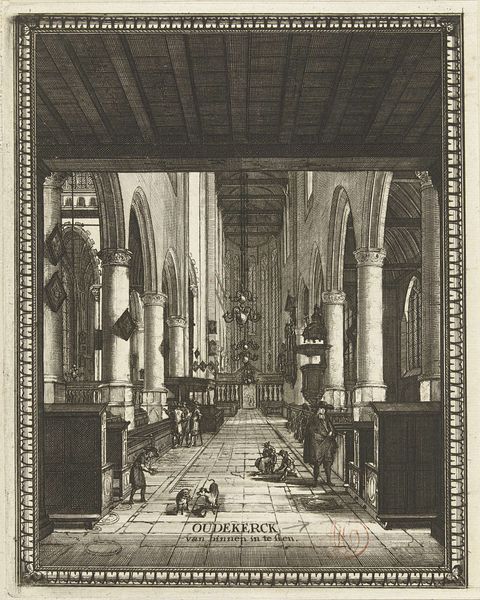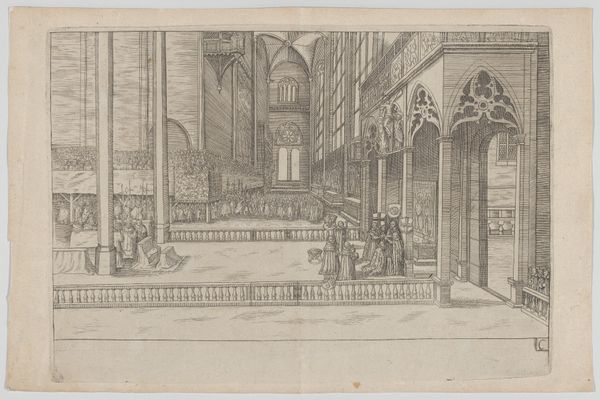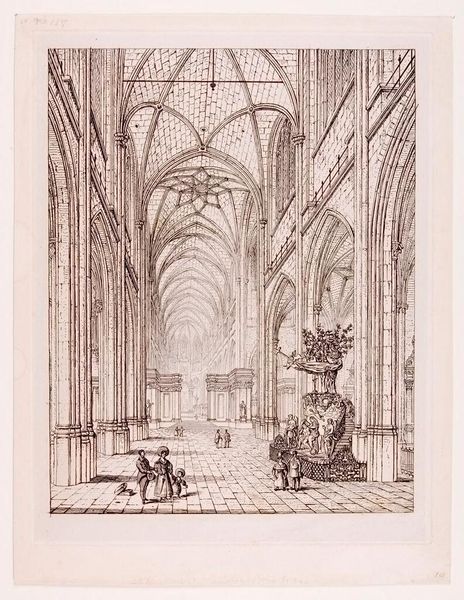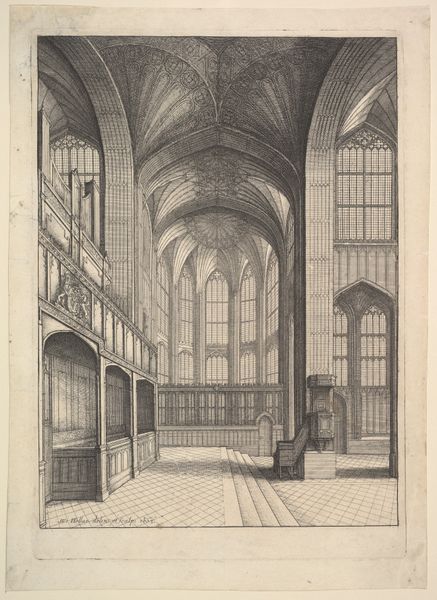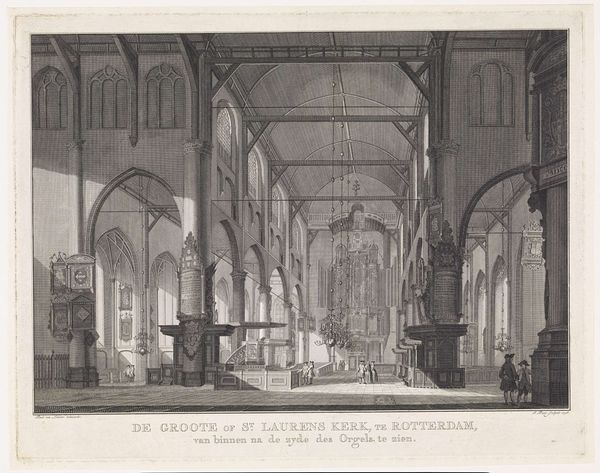
Interieur van de Nieuwe Kerk te Amsterdam, naar het oosten gezien 1665
0:00
0:00
print, engraving, architecture
#
dutch-golden-age
# print
#
engraving
#
architecture
Dimensions: height 194 mm, width 314 mm
Copyright: Rijks Museum: Open Domain
Curator: The grandeur is palpable! It's incredible how Veenhuysen captured the New Church of Amsterdam's interior in this 1665 engraving. Editor: I’m struck by the stark contrast between the immense scale of the architecture and the tiny figures within. There’s a quietness, almost melancholy, despite the intricacy of the etched lines. Who were the intended audience for such detailed prints, and what stories do you think they told themselves when beholding them? Curator: These prints circulated widely, acting as both records of architectural achievement and commodities in their own right. This engraving is fascinating for what it reveals about 17th-century printing processes. Consider the skill needed to produce such detailed line work, which would have required meticulous labour. It challenges our understanding of art production by foregrounding those often uncredited artisans. Editor: Absolutely. It makes me consider the societal position of the church itself during that era. What role did it play in the lives of the people, and what did the deliberate depiction of everyday individuals within this architectural spectacle signify? Was it about illustrating the place of common folk in sacred settings? Curator: It may very well be about celebrating civic piety, and by purchasing this image you also purchase social proximity with the important church leaders of the time. I wonder how readily such art was actually purchased. I want to know who consumed these images, what class they represented, and who owned the means to distribute it, what distribution networks existed. Editor: These are great questions that demand to be answered as part of an exploration into accessibility and societal influence within Golden Age culture. We're essentially peeling back layers, from production materials to the deeper layers of a specific context. Curator: This analysis illuminates the artwork as both object and agent within Dutch society. Editor: I think we have collectively encouraged a deep look that does more than describe a pretty place but explores the deeper values this kind of art signifies.
Comments
No comments
Be the first to comment and join the conversation on the ultimate creative platform.
